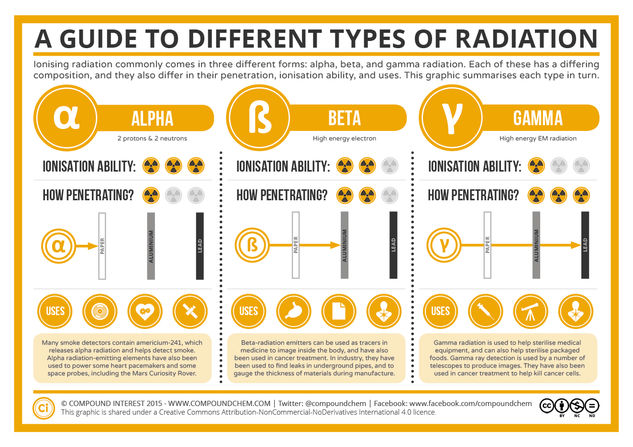© Compound InterestA Guide to the Different Types of Radiation
We’re venturing tentatively into the border region between chemistry & physics today, with a look at some of the different types of nuclear radiation. These types vary in their composition, characteristics, and uses, but here’s an attempt to sum up the most common in one succinct graphic.
One thing that the different types of radiation featured here have in common is their ability to ionise. Ionising radiation is radiation that has enough energy to remove electrons from atoms and molecules, and cause them to form ions (charged particles); in some cases, it can also lead to the breaking of chemical bonds. This ionisation can cause damage to living cells, and is the main danger that radiation can pose. Very high levels of radiation can have very serious health effects, and death can occur in hours if a person is exposed to a large enough amount.







